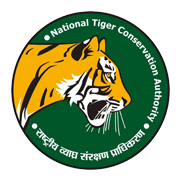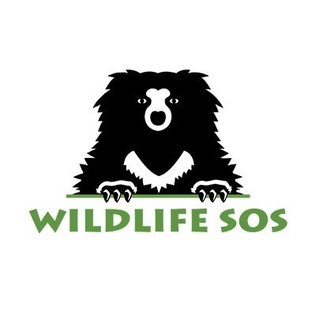
Poaching is the illegal hunting or capturing of wild animals, usually associated with land use rights. Poaching was once performed by impoverished peasants for subsistence purposes and to supplement meager diets. It was set against the hunting privileges of nobility and territorial rulers.

The Bengal tiger is a population of the Panthera tigris tigris subspecies and the nominate tiger subspecies. It ranks among the biggest wild cats alive today. It is considered to belong to the world's charismatic megafauna.

The Sundarbans National Park is a national park, tiger reserve and biosphere reserve in West Bengal, India. It is part of the Sundarbans on the Ganges Delta and adjacent to the Sundarban Reserve Forest in Bangladesh. It is located to south-west of the Bangladesh. The delta is densely covered by mangrove forests, and is one of the largest reserves for the Bengal tiger. It is also home to a variety of bird, reptile and invertebrate species, including the salt-water crocodile. The present Sundarban National Park was declared as the core area of Sundarban Tiger Reserve in 1973 and a wildlife sanctuary in 1977. On 4 May 1984 it was declared a national park. It is a UNESCO World Heritage Site inscribed in 1987, and it has been designated as a Ramsar site since 2019. It is considered as a World Network of Biosphere Reserve from 1989.

The Wildlife Trust of India is an Indian nature conservation organisation.

The Environmental Investigation Agency (EIA) is an international NGO founded in 1984 in the United Kingdom by environmental activists Dave Currey, Jennifer Lonsdale and Allan Thornton. At present, it has offices in London and Washington, D.C. The EIA covertly investigates and campaigns against environmental crime and abuse.

Wildlife trade refers to the products that are derived from non-domesticated animals or plants usually extracted from their natural environment or raised under controlled conditions. It can involve the trade of living or dead individuals, tissues such as skins, bones or meat, or other products. Legal wildlife trade is regulated by the United Nations' Convention on International Trade in Endangered Species of Wild Fauna and Flora (CITES), which currently has 184 member countries called Parties. Illegal wildlife trade is widespread and constitutes one of the major illegal economic activities, comparable to the traffic of drugs and weapons.
Belinda Anne Irene Wright is a prominent wild life photographer and wildlife conservationist in India. She is the Executive Director of the Wildlife Protection Society of India (WPSI).
The tiger is an iconic species. Tiger conservation attempts to prevent the animal from becoming extinct and preserving its natural habitat. This is one of the main objectives of the international animal conservation community. The Convention on International Trade in Endangered Species of Wild Fauna and Flora (CITES) has played a crucial role in improving international efforts for tiger conservation.

The National Tiger Conservation Authority (NTCA) was established in December 2005, following a recommendation of the Tiger Task Force. The Prime Minister of India established it to reorganise the management of Project Tiger and many Tiger Reserves in India.

Wildlife Alliance is an international non-profit forest and wildlife conservation organization with current programs in Cambodia. It is headquartered in New York City, with offices in Phnom Penh. The logo of the organization is the Asian elephant, an emblematic species and the namesake for the Southwest Elephant Corridor that Wildlife Alliance saved when it was under intense threat of poaching and habitat destruction in 2001. It is today one of the last remaining unfragmented elephant corridors in Asia. Due to Government rangers' and Wildlife Alliance's intensive anti-poaching efforts, there have been zero elephant killings since 2006. Dr. Suwanna Gauntlett is the Founder and Chief Executive Officer of Wildlife Alliance, and one of the original founders of WildAid. The organization is governed by a board of directors and an international advisory board that provides guidance on strategy, fundraising, and outreach.

Wildlife smuggling or wildlife trafficking concerns the illegal gathering and trade of endangered species and protected wildlife, including plants and byproducts or products utilizing a species. Research on wildlife smuggling has increased, however, knowledge of the illicit trade remains limited. The differences between international policies and tendencies likely contribute to the extensive estimated range of wildlife smuggling, anywhere from $5-$23 billion, with an additional $67-$193 billion when timber and fish are included. The prolific growth of wildlife smuggling makes it the fourth-largest criminal enterprise globally after drug, firearm, and human trafficking. Products demanded by the trade include but are not limited to ivory, bushmeat, traditional medicine, and exotic pets. China and the United States are the largest buyers in the illegal wildlife trade. It often involves other illegal activities such as tranquilizing animals without proper authorization.

The ivory trade is the commercial, often illegal trade in the ivory tusks of the hippopotamus, walrus, narwhal, black and white rhinos, mammoth, and most commonly, African and Asian elephants.
The Freeland Foundation is an international NGO headquartered in Bangkok which works in Asia on environmental conservation and on human rights. The organization intends to stop wildlife and human trafficking.

The United States Fish and Wildlife Service Office of Law Enforcement contributes to Service efforts to manage ecosystems, save endangered species, conserve migratory birds, preserve wildlife habitat, restore fisheries, combat invasive species, and promote international wildlife conservation. It is an office of the United States Fish and Wildlife Service (FWS).

The International Elephant Foundation (IEF) is a non-profit 501(c)(3) corporation. Formed by individuals and institutions, IEF is dedicated to the conservation of African and Asian elephants worldwide.

WildTeam is an international conservation organisation which began in 2003 as The Wildlife Trust of Bangladesh and the Sundarbans tiger project. The Sundarbans Tiger project started out as a Bangladesh Forest Department and University of Minnesota research initiative; focusing on the ecology and conservation of tigers in the Bangladesh Sundarbans. Between 2003 and 2008, the Wildlife Trust of Bangladesh carried out research and education work in relation to Bengal tiger, Hoolock gibbon, Asian elephant, and Asian black bear.
Education for Nature Vietnam (ENV) was set up in 2000 and according to their website is Vietnam's "first local non-governmental organization to focus on wildlife protection."

Many species are affected by poaching, including illegal hunting, fishing and capturing of wild animals, and, in a recent usage, the illegal harvesting of wild plant species. The article provides an overview of species currently endangered or impaired by poaching in the Americas, sub-Saharan Africa, and South-East Asia.

Wildlife SOS (WSOS) is a conservation non-profit organisation in India, established in 1995 with the primary objective of rescuing and rehabilitating wildlife in distress, and preserving India's natural heritage. It is currently one of the largest wildlife organisations in South Asia.
Steven R. Galster is an American environmental and human rights investigator and counter-trafficking program designer. Since 1987, he has planned and participated in investigations and remedial programs to stop wildlife and human trafficking and to mitigate corruption and build governance in Asia, Africa, Russia, South America, and the USA.















